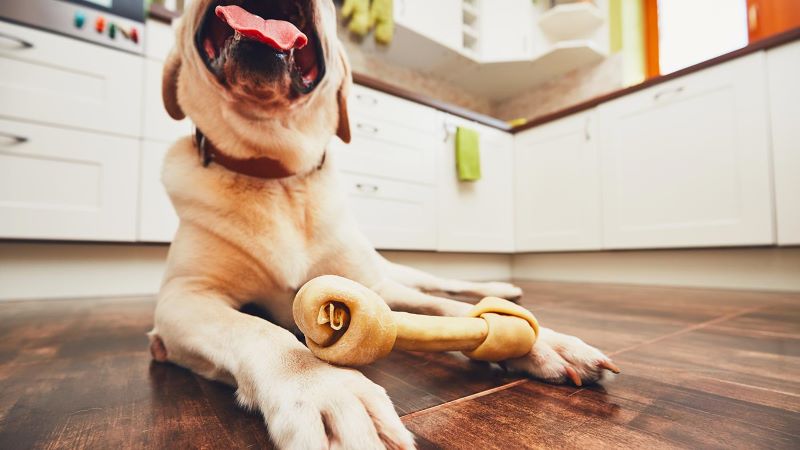“Doggie, doggie, where’s your bone, somebody stole it from your home…”
It’s a popular children’s song and game, and emphasizes the “normalcy” of giving dogs bones. But are bones really safe for your dog? And if so, what type and how much?
Between the dates of November 1, 2010 and September 12, 2017, the FDA reported 15 cases where dogs died after ingesting commercially available bone treats. Another 75 became sick after eating bones as treats. And these are just the cases that have been reported. I am sure there are plenty of other cases that were never recorded.
So what’s safe? There are two types of bones: nutritional and recreational. We’re going to discuss safety in using both.
Nutritional bones
Nutritional bones should be ground up instead of whole, and are fed to dogs as part of a raw food diet. In the post, Can Dogs Eat Bones? Raw and Cooked Bones For Dogs, Karen Becker, DVM mentions that bones can be a good source of calcium and phosphorous. Robert Mueller, Vice President of BARF (Biologically Appropriate Raw Food) advocates raw bones for the benefits similar to those found in fiber. If your dog struggles with inflamed anal sacs, including ground bones in his diet can harden his stool and prevent him from scooting on the carpet in order to soothe the irritation. If you do choose to include ground bone meal in your dog’s diet, it is important that you consult with a veterinary nutritionist to make sure you offer the right amount and proper type of bones. According to Becker, softer and more hollow options like chicken bones (backs, necks, and wings) are best.
Recreational bones
Recreational bones are raw, meaty bones that are offered whole. Recreational bones have many benefits: they provide entertainment, tap into your dog’s natural instincts, and can have oral benefits. In the PetMD post, How to Use Bones in a Dog's Raw Food Diet
Michele Yasson, DVM mentions that raw, meaty bones can scrape at your dog’s teeth to help keep them clean and the saliva created by chewing can help to wash the teeth. If you decide to give your dog a bone for recreational purposes, raw bones should be obtained from respected, local butchers. Never give your dog cooked bones. They can become brittle and break into sharp pieces that will do damage when they pass through the gastrointestinal tract. Also, make sure to monitor your dog when he is chewing his bone. Never leave your dog alone with a bone, and stick to bones that are smaller than your dog’s head. Dr. Becker suggests that this size will still provide mental stimulation for your dog while reducing the chance of him breaking off a piece that will cause health problems.
Safety first
Next time you decide to “throw your dog a bone,” just make sure to follow our guidelines so you can give your dog the best possible chance of enjoying that delicious treat! Consider enrolling in pet insurance in case your dog gets his paws on a bad bone so you can afford the best veterinary care possible.

